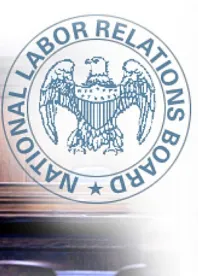On Nov. 21, the U.S. Court of Appeals for the Second Circuit in Constellation Brands v. NLRB reviewed the NLRB’s use of the framework set forth in Specialty Healthcare & Rehabilitation Center of Mobile, 357 NLRB 934 (2011) for evaluating proposed bargaining units.
The court upheld the NLRB’s two-step analysis, required under Specialty Healthcare, for determining whether employees share a “community of interest.” Under step one, the NLRB regional director performs a community-of-interest analysis to determine whether the proposed unit is appropriate. Once it is deemed appropriate, under the second step of the analysis a party opposing the proposed bargaining unit must demonstrate that excluded employees it wants included in the bargaining unit share an overwhelming community of interest with the already included employees. Under this analysis, the NLRB generally recognizes that a regional director has broad discretion to approve any appropriate unit.
While a regional director’s discretion is broad, the court in Constellation Brands reiterated that such discretion is not unfettered. Along these lines, the court further recognized that the NLRB has traditionally disfavored fractured units and that arbitrary exclusions are disfavored. In other words, the inclusion or exclusion of employees must have a rational basis.
Although employers have decried the Specialty Healthcare formulation, citing its use to create so-called “micro units” and cause a proliferation of bargaining units (in turn causing employers increased costs when having to administer multiple collective bargaining relationships), the court held that the Specialty Healthcare framework is valid. In doing so, the Second Circuit joins the Fourth, Fifth, Sixth, Seventh and Eighth Circuits, all of which have approved the NLRB’s use of the Specialty Healthcare framework.
The chink in the armor that the Second Circuit found, however, is that in applying the Specialty Healthcare analysis, regional directors cannot ignore their obligation to actually engage in a meaningful first step analysis. The court emphasized that such analysis cannot simply repeat the standard. The court held that although the regional director concluded the petitioned employees had distinct characteristics, the regional director “…did not explain why those employees had interests sufficiently distinct from those of other employees to warrant the establishment of a separate unit.” In doing so, the court noted the regional director had to explain “the weight and relevance” of any factual findings, and could not do so in step two of the analysis. In other words, as a matter of proof the regional director had to first make a prima facie showing at step one of the analysis.
Critically, the court noted the other federal circuit courts that have accepted Specialty Healthcare have only done so based on the requirement that the NLRB analysis must be sure to not exclude employees “…on the basis of meager differences.” Because no such analysis was completed, the Second Circuit in Constellation Brands refused to uphold the regional director’s unit determination. In doing so, the court also criticized the NLRB for failing to properly exercise its power of review to ensure Specialty Healthcare was applied correctly. Accordingly, the Second Circuit reversed the Board’s unit determinations.
This case provides an avenue of challenge for employers in cases applying the Specialty Healthcare analysis, although it is admittedly narrow. The hope for employers is that congressional action will commence to dismantle Specialty Healthcare, which may not prove to be too far out of reach with the election of Donald Trump.




 />i
/>i

